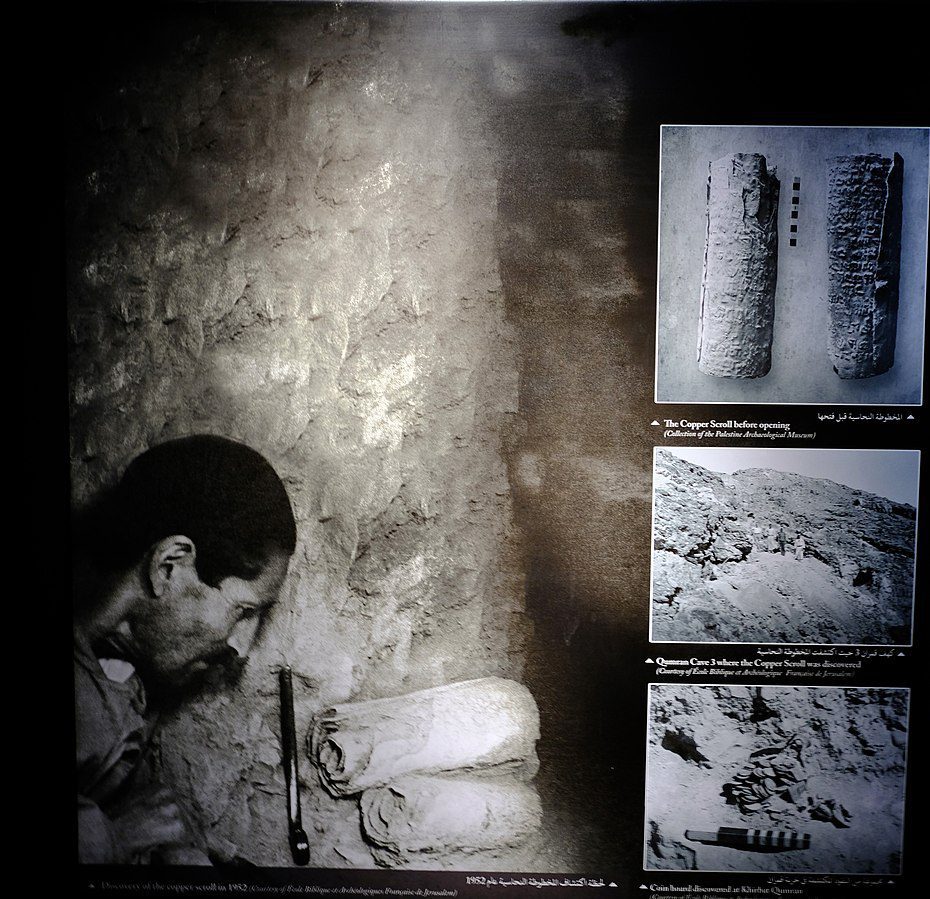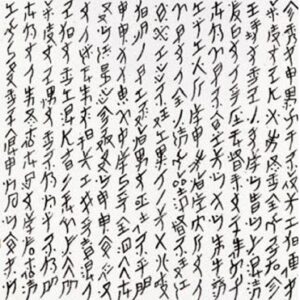Secret languages are used by groups at the edge of society. Most of these languages are confined to that community, but a few have entered the public domain.
“It’s time to bulk the cull to the right. To vada that zhooshy capello.” Does any of this make sense to you? Good. It isn’t meant to.
For thousands of years, people have developed secret languages to confuse authorities, obscure information, and conceal their own existence as a distinctive group. Criminal gangs use secret language to avoid detection by the police. Ostracized groups often use secret language to converse with each other without fearing public persecution.
Many of these languages remain unknown, hidden away in the shadowy corners of the world. There’s no way to know how many are out there. Tens, hundreds, maybe even thousands. But some of these languages are no longer secret. They’ve entered the public domain.
Secret language or anti-language?
Secret languages go by many names. Some people call them argots or cants. Others call them cryptolects. And in the 1970s, a British-born linguist named Michael Halliday coined another term: anti-language.
Anti-languages, according to Halliday, are the languages spoken by groups of people who live at the edges of mainstream society. Some of these people choose this kind of life, like religious zealots in ancient Palestine, or thieves in Elizabethan England. Others find it forced upon them, like women in 13th-century China, or the gay community in 20th-century Britain.
These are the kinds of edge societies where anti-languages are found. These languages are usually simple. A common language like English is chosen and then obscured by twists on words and phrases. These tweaks, though simple, can be very effective—a manner of speech that sets these societies apart.
Cryptic A, B, and C
The oldest known anti-language dates all the way back to the 3rd century BCE, but it didn’t enter public awareness until 1946, when a group of shepherds found seven scrolls in a desert cave beside the Dead Sea. These scrolls were ancient fragments of Jewish manuscripts, the oldest ever discovered.

These Dead Sea Scrolls, as they came to be known, caught the attention of the American Society of Overseas Research (ASOR). Over the next few years, they combed the region for other artifacts, and an additional 974 manuscripts were found.
Most of these manuscripts were written in Hebrew or Aramaic, but 1% of the scrolls differed. They used the same grammar and structure as mainstream Hebrew, but with certain letters swapped out for unusual symbols. This was an early example of an anti-language; three anti-languages, in fact: Cryptic A, B, and C. As one scholar put it, the authors of these scrolls had a “linguistic identity” that was “transparent among them but opaque to outsiders.”
In 3rd century Palestine, the Jewish people were a marginal, outsider community. Historians believe they used Cryptic A, B, and C to protect their theology from mainstream society: non-believers who might corrupt or repurpose the scrolls for their own ends. It was a protective, defensive measure, as anti-languages often are.
Thieves’ Cant
Thieves’ Cant, or peddler’s French, is nowhere near as old as Cryptic A, B, and C, with the first reports of this secret language found in 16th-century Britain. Despite this fact, the purpose of Thieves’ Cant was similar to the codes used in the Dead Sea Scrolls. It was used to protect an outsider community from the pervasive force of mainstream society.
In this case, the speakers of the anti-language were criminals and thieves, and they used it to avoid the attention of the law. Thieves’ Cant was built around the basic grammar of common English, but with certain words swapped out for cryptic equivalents. A bounge was a purse. Ken was a house. A glymmer was a fire.
This approach was simple but extremely effective. Thomas Harman, a 16th-century magistrate, recorded a vivid example: “Byng we to Rome vyle to nyp a bounge, so shall we have lower for the bowsing ken.” If you aren’t already fluent in Thieves’ Cant, here’s Harman’s translation: “Let’s go to London and cut a purse, so we shall have money for the alehouse.”
Thomas Harman learned the secrets of Thieves’ Cant by paying beggars to teach him words. He eventually published a pamphlet on the subject, raising the awareness of possible victims. By doing so, he also helped to kill Thieves’ Cant. If mainstream society knew the secrets of the tongue, it no longer served its purpose.
This is a common theme in the history of anti-languages—when they enter the sphere of public awareness, they inevitably disappear. Criminals were forced to adapt, to come up with new languages to replace the old. This process has continued all the way to the current day, with modern criminals still using slang to hide their intentions in plain sight.
Grypserka
Given the popularity of anti-languages amongst criminal groups, it should be no surprise that secret tongues are also common in prison systems. Grypserka is a well-known example of this: an intricate set of secret words used by Polish prisoners at the start of the 20th century.
Just like Thieves’ Cant, the Grypserka language was a reliable way for inmates to communicate in secret, but that wasn’t the only function of this particular anti-language. It also served as a form of defiance—a sharp refusal to conform. When so much of a prisoner’s daily life was tightly controlled, language was one of the only ways to resist.
Similar languages have developed in prisons all across the world. Another famous example is Boobslang, which is still spoken by prisoners in New Zealand. Grypserka, however, is no longer used. It was thoroughly studied by Michael Halliday as part of his work on anti-language, and as soon as he published a paper on the subject, Grypserka began to fall into disuse. It suffered the same fate as Thieves’ Cant: publicity followed by a slow death.
Nüshu
Another example of an anti-language comes from Jiangyong County, a region in the south of China. For hundreds of years, women in Jiangyong were subject to strict Confucian regulations. They always had to obey their husbands and fathers and were only allowed to perform certain kinds of jobs, which usually involved housework or needlework.

During this period of sexist repression, the women of Jiangyong developed a language called Nüshu. Just like Cryptic A, B, and C, Nüshu was built around symbol substitution, with Chinese characters replaced by secret alternatives.
Nüshu is an especially interesting language because it was rarely written on paper. Instead, the women would embroider phrases onto items of clothing. This made it easy for the women to exchange secret messages without raising the suspicion of the men. Needlework, after all, was expected of them.
Thieves’ Cant and Grypserka were killed by publicity, but Nüshu died off for a different reason. When women’s rights improved in China, midway through the 20th century, the anti-language no longer served a purpose. If a group no longer feels ostracized, it does not need to sustain the language that once set its members apart.
Polari
In early 20th century Britain, homosexuality was illegal. Like the marginalized women in Jiangyong County, the gay community was forced to develop an anti-language simply to be able to speak their minds without fear of public persecution.
This language was called Polari. Again, it was based on substitution, with existing words from the English language replaced by new words found elsewhere. The new words were taken from various sources, including the drug subculture, the air force, and Cockney rhyming slang. It also drew from Parlyaree, another anti-language that used to be spoken by fairground showmen and traveling entertainers in 17th-century Britain.
Polari nouns were usually related to people and body parts, while the verbs concerned sexual acts. A dish was a bum. A trade was a sexual partner. Omi-palones were gay men, and charver referred to gay sex. If a police officer overheard a pair of omi-palones discussing the tasty dishes on their latest trades, they would hardly think it had anything to do with gay sex!
Just like Nüshu, Polari declined when its users no longer needed it. Homosexuality was partially decriminalized in the 1960s, and Polari fell into disuse. Having said that, in the last few years, it has enjoyed a small resurgence. Many members of the LGBT community are proud of the resistance that Polari used to represent.
Nadsat

Nadsat doesn’t count as a true anti-language, because it didn’t develop organically. It was invented by an author, Anthony Burgess, for his famous novel, A Clockwork Orange. It’s only worth mentioning because Burgess was a linguist, and heavily influenced by anti-languages in the real world. Nadsat might not be a true anti-language, but it certainly looks like one.
Many of the words in the Nadsat language are the product of substitution, with a particular focus on Russian words, often tweaked to sound more English. For example, the book calls grandmothers baboochkas, which is a play on the Russian baboushka. Nadsat also draws on other sources, including Cockney rhyming slang and German.
If nothing else, Nadsat allows readers to learn what an anti-language feels like. With so many words that don’t make sense, A clockwork orange feels strange and inaccessible, as though the characters are part of a niche community that the mainstream reader can’t quite comprehend. It’s like overhearing a conversation in Polari or trying to read a message in Nüshu. Anyone interested in anti-languages should certainly give A Clockwork Orange a try!
L33t sp34k
Anti-languages aren’t solely confined to the annals of history. L33t sp34k, or 1337-speak, is a product of the digital age. It takes the basic alphabet of the English language but substitutes letters with numbers and symbols. It’s an idea most of us have come across in text messaging: “h3110 h0w ar3 y0u?”
Most anti-languages are used to hide the meaning of words from other people, but L33t sp34k was developed for a different reason: it was used to fool computers. In the early days of the internet, forums often used auto-filters to prevent their users from posting certain words. L33t sp34k was developed as a way of bypassing the system to speak more freely, as the auto-filter would fail to recognize the strings of symbols as words.
Nowadays, most auto-filters are smart enough to detect L33t sp34k. But this digital anti-language lives on, regardless. It is frequently used by online communities, not to hide information, but to build a sense of community spirit. Memes are shared with L33t sp34k wordplay, or usernames are constructed by using L33t sp34k terms. Usually, entering popular culture is enough to kill an anti-language, but in the case of L33t sp34k, popular culture seems to have sustained it!


